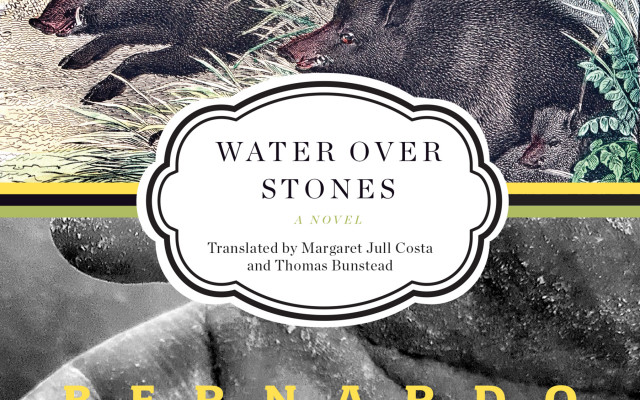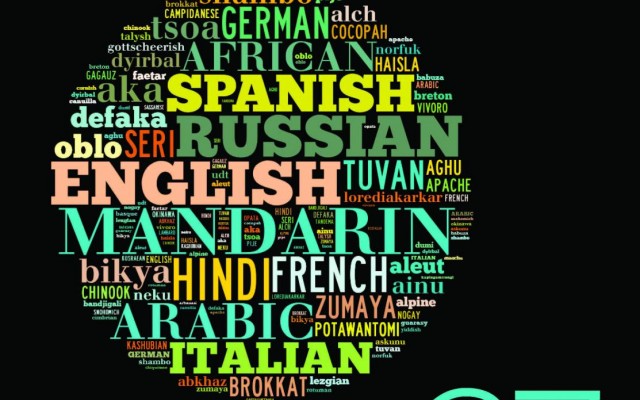Teaching Translation: Rebecca Kosick

Teaching Translation is a series of interviews with translators who also teach. For this installment, Exchanges spoke with Rebecca Kosick, who is Senior Lecturer in Translation at the University of Bristol, UK, where she also co-directs the Bristol Poetry Institute and runs the Indisciplinary Poetics Research Cluster. She is the author of the poetry collection Labor Day (Golias Books 2020) and Material Poetics in Hemispheric America: Words and Objects, 1950-2010 (Edinburgh University Press 2020). Her poems and translations of poetry have appeared in venues including the Iowa Review, Fence, The Recluse, and ecopoesia.com. In addition, she has published numerous academic articles and essays addressing 20th century and contemporary poetry and translation in the Americas. Kosick visited the University of Iowa's Literary Translation Wednesdays with Translators lecture series.
How would you describe the translation classes you teach?
I teach a variety of translation classes for the Department of Hispanic, Portuguese, and Latin American Studies and for the MA in Translation at the University of Bristol, UK. I should probably preface this by saying that translation is highly professionalized here in the UK, and also a major component of all language-learning degrees. Both of these aspects of translation teaching in the UK were somewhat new to me when I arrived here from the US where translation, in my own educational background, was primarily embedded in the discipline of comparative literature. My translation teaching here at Bristol is part of a broader framework that isn’t as tightly tied to literary studies.
My undergraduate translation classes are predominately workshop-based, and we work on a variety of 'text-types' over the course of the year—the translation classes run for a full year. These are literature, journalism, academic writing, and 'institutional' texts, which might be things like reports from NGOs. We work on one text type at a time and students prepare individual translations of the same text at home before coming to class. Then, in class, the students break into groups and, together, produce a new draft translation of the same text. Finally, we come together as a class and produce a class translation based on all the group translations. Later, they submit independent translations. It's an iterative process! What's great about this format is that students have a chance to consider their translation choices together—to weigh the benefits of a given word or approach and judge which might best serve the translation’s audience or purpose. Students can also see firsthand that there are always multiple pathways to a translation.
For the MA in Translation, which is distanced-based, we use a similar format, though it takes place asynchronously. Students work on a series of translations—again, all students working on one text at a time—that they submit to the whole group. This is followed by a discussion of the challenges and particularities of the text, how students each overcame or dealt with these, what strategies they used, and so on. Here we translate all kinds of 'texts' from poetry to tax forms to wall displays in art galleries. Given the range of materials covered, students have to develop strong research skills, not only in relation to specialized vocabulary, but also in relation to the norms of any given publication or other context in which the translation might be used.
Beyond these workshop-style classes in the practice of translation, translation weaves through all my teaching. I also teach classes on the Theories of Translation, and classes that focus on experimental and multilingual poetry and poetics.
Sometimes people say creative writing can't be taught. Do you think that's true of translation?
I think for translation the learning is in the doing, in that there is no way to learn translation without also doing it. That said, to practice translation with guidance and in conversation with other students absolutely aids in the process of developing skills as a translator. Students get to see what lands or doesn't by having consistent access to feedback. There's also lots to be learned in terms of specific techniques that can be applied in a given situation—when is it productive to use amplification or compensation or transposition, etc. These are probably things you can feel your way toward through practice but studying translation can jumpstart that process and give students a scaffolding to support their choices, even if those choices continue to be somewhat intuitive. For my undergraduate students especially, I think building confidence in their ability to intervene as translators is also something important that they learn in the classroom. Many start off very reluctant to depart from the syntactic structures of the source text, but once they get permission to go past the perceived limit in the form of practice and enthusiastic feedback from the instructor and their peer readers, their translations immediately expand in possibilities!
What role does translation theory play in your classroom? How about the practice of translation—what translation exercises do you have your students practice?
This depends on the class. We don't delve very deeply into translation theory in the undergraduate classes, but translation theory is a big part of our MA program. One of the things I like best about working in Translation Studies is the reciprocity of theory and practice. I tell my students that translation theory isn't a guide, but that it’s there to inform their thinking. For instance, in our MA, we dedicate a portion of the Theories class to ethics and translation, and there are always really interesting discussions that come out during this portion of the class. One activity we do there is present students with a series of scenarios in which a translator must make an ethical decision of some kind. Students combine their research into ethics with their own instincts and assess the available options. There is often lots of disagreement!
When practicing translation, we have to make a million decisions, big and small, and theory can help us consider how those decisions are embedded in a broader network of consequences, for language; for what Berman calls "networks of signification"; for the ways texts engage ethically with their sources, readers, and the wider world, and more. Maybe as beginning translators we have only just begun to think through the repercussions of a given choice or set of choices. Well, the great thing about having a robust theoretical bibliography to turn to is that there are likely dozens of people out there who have thought about this too, and they’re there just waiting for you to join the conversation.
In terms of exercises, one thing I've enjoyed doing recently is asking students to translate the poetry that appears in Hélio Oiticica's Tropicália, which was recently on display at the Tate Modern. The work includes many small poems by Roberta Camila Salgado painted on bits of wood and other objects positioned around the installation. I ask students to translate these but also to write a recommendation for where to place the translations or how to incorporate them into the artwork. Do they suggest a wall panel outside the work? A pamphlet? A voice-over? Painting English versions of the poems on objects and adding these to the installation? It’s interesting to consider the options and how they might shift the experience of the work.
How has your translation teaching pedagogy changed in our current COVID-19 era of online education?
Actually, my translation teaching has remained pretty consistent. Like I mentioned, the MA in Translation at the University of Bristol was already a distance program. So that has stayed functionally the same, although this year it's been interesting to see that students are now coming to this program with an increased familiarity with digital education tools given their sudden ubiquity. For the former in-person undergraduate workshops, we've migrated what were in-person conversations to the digital sphere. So we use video conferencing and break-out rooms in place of small classroom groups, and the students produce their group translations in a shared digital document instead of on the board in the classroom. A lot of my other teaching has been totally transformed, but my translation teaching has been pretty adaptable to the online environment.
How has teaching informed your own translation work? Has teaching translation helped you discover things about your own translation practice?
I think in general that teaching translation has made it so that I am very aware of what I am doing when I translate, and I've lost some of the intuition that guided me earlier in my practice. I do think that's a value overall, but it may have downsides. Most of what I translate is poetry, and with poetry, I'm always interested in the role of accidents and unanticipated results. I wonder if being so aware of my translation processes means there are fewer opportunities for language to take its own turns. This is probably more of a worry than a reality, though, because, happily, language is always doing more than we mean it to.
Another thing is that, because I so often work with students on non-literary texts where the prevailing norm is to prize fluency and what Venuti would call invisibility, I have to work harder to let some estranging features of the source text into my translations. This was much easier for me when I was first translating, especially because I have always been interested in sound. I would often choose a cognate where possible, for example, in order to produce those cross-linguistic poetic echoes. Now, I interrogate every instance of this sort of thing! I think—I hope—it's for the best!
Do you think it's possible to fully evaluate a translation from a language you don't know?
Well, it depends on the text type and the purpose of the translation. For poetry, my ideal is always to be able to read bilingually, even for languages I don't know, because I enjoy the processing of searching out the links between the texts. I can evaluate a translated poem as a poem in its own right whether I know the source language or not, but I take pleasure in seeing what the translator did, and for me that is part of my relationship to, or experience of, translation, if not exactly an evaluation of it. In other cases where the translation is meant to stand on its own in the target language, for example, as a refrigerator repair manual, then sure, there's absolutely no reason why that text needs to be evaluated in terms of its relationship to the source—only whether it helps to keep the milk cold!




